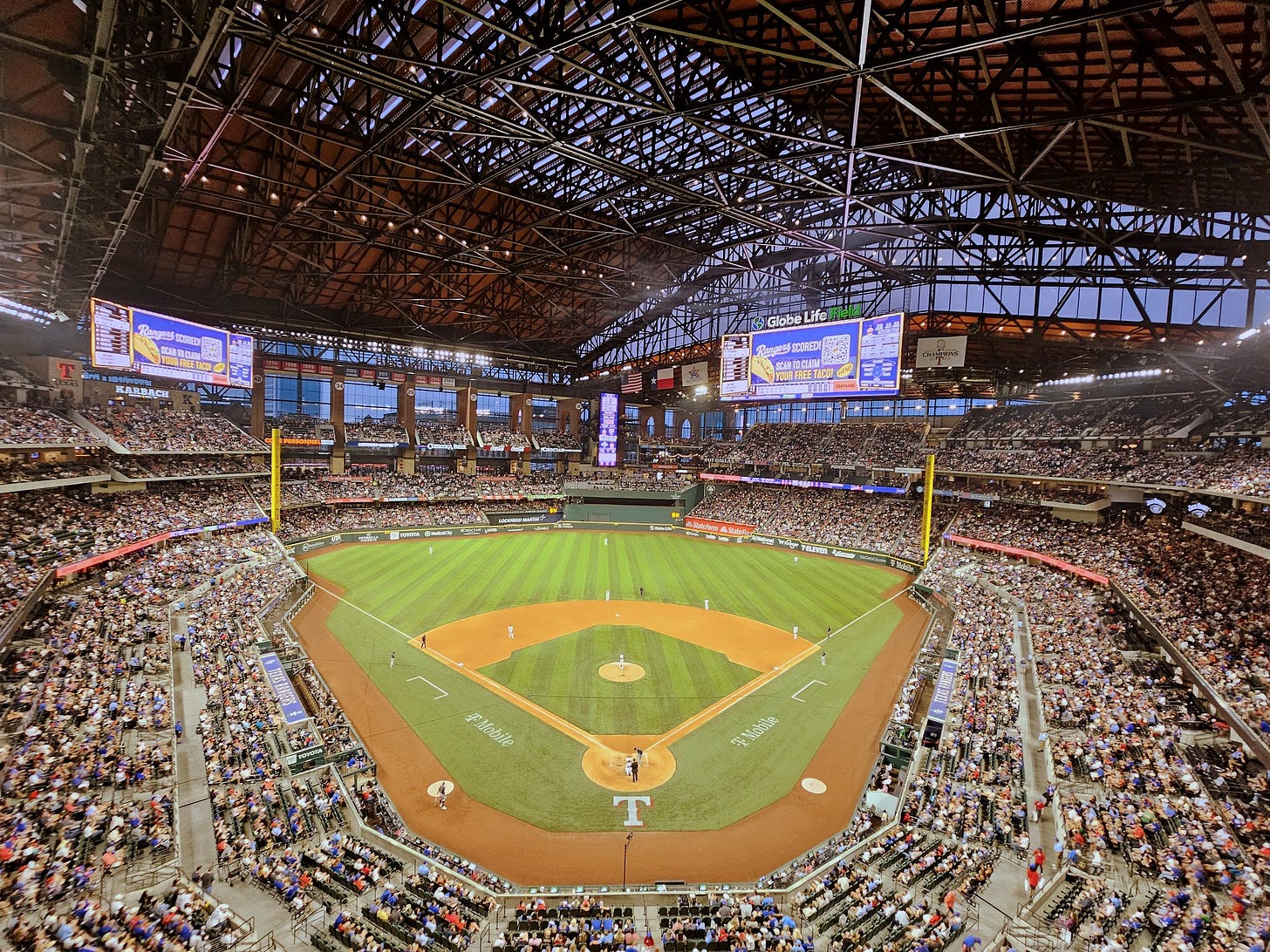
As wildfires raged in Southern California this month, sports were probably the last thing on anyone’s mind. But sports and climate change are inherently linked.
These wildfires, made possible by extremely dry conditions, forced the Los Angeles Rams to move their recent NFL playoff game to Glendale, Arizona.
Months earlier, Hurricane Milton, a storm supercharged by climate change, blew the roof off Tropicana Field in St. Petersburg, forcing the Tampa Bay Rays to play their upcoming season at a nearby spring training facility.
Both moves are temporary: The Rams will return next season to SoFi stadium in suburban L.A., and the Rays have a multi-year lease in St. Pete. But as climate disasters become more common and more extreme, such events will not only delay, cancel, or move games — they may also drive the relocation of franchises.
Though no modern precedent exists for relocating teams because of climate change, U.S. professional sports move a lot.
In the NFL’s 100-year history, 11 teams have moved a total of 16 times (one move every six years or so).
When the Oakland A’s move to Vegas in several years, it’ll be the team’s fourth city in franchise history (a move not without climate consequences).
Sports teams are naturally mobile because most teams are treated as private assets owned by billionaires. These billionaires typically justify relocation by citing financial struggles or poor playing facilities — after all, it’s their team and they’re in it to make money.
And because climate disasters are really expensive, it’s only a matter of time before climate change is the basis of many moves, even if these owners don’t say it outright.
Let’s look at California: For several years, major insurers have pulled out of the fire-prone state (State Farm dropped thousands of L.A. policies months before the latest fires), leaving homeowners — or stadium owners — on the hook for fire damages.
And Florida: In Tampa Bay, sea level rise has complicated the Rays’ stadium search, eliminating several potential sites expected to be underwater in the future.
Specifically, Tampa Bay shows the many factors owners or leagues must consider when choosing the location of franchises. Because it’s not just sea level rise. Teams like Tampa, Houston, Phoenix, and Miami, for example, must play baseball under roofs to shield fans and players from heavy rain and extreme heat.
This is a problem because roofs add billions of dollars to construction costs, a costly lesson recently learned in Arlington, Texas:
After only 26 years in their open-air ballpark, the Texas Rangers moved out in 2020, citing the need for a dome to deal with rising summer temperatures. Over a billion dollars later, the Rangers have a new domed stadium, which sits right across the street from the old one.
Of course, you can’t write about franchise relocation and climate change without writing about how Seattle lost its professional basketball team to Oklahoma City:
In 2005, Hurricane Katrina hit New Orleans, forcing the city’s basketball team, the Hornets, to find a new home while the city recovered.
For two seasons, the Hornets played in Oklahoma City, before returning to New Orleans in 2007.
After seeing great attendance at Hornets games in Oklahoma, a group of local businessmen bought the Seattle Sonics and moved them to OKC in 2008.
In other words, you could argue that the Oklahoma City Thunder exists, and the Seattle Sonics do not, because of the destructive force of a hurricane, one made much more powerful by climate change.
Perhaps the worst part of team relocation is what it does to a city and a fanbase. Cities that lose teams lose a huge source of revenue. And fans that lose teams lose a sense of self, along with the communal bond at the heart of so many sports.
That sounds melodramatic, but my childhood was very much shaped by these forces.
My lifelong love for baseball, for example, reminds me of my earliest memories with my dad, who not only took me to Cleveland Indians games but also always listened to games on the radio (which inevitably meant I always listened to games on the radio).
It saddens me that those memories, many of which formed the basis of a lifelong connection with my father, may not be shared by future generations deprived of a team. But it also reminds me of what we lose when we fail to take climate change seriously.




*Do* cities lose revenue from these teams moving? Many of these stadiums come with large property tax breaks, so building a stadium may be a net negative for a city’s property tax budget. And the idea that they are bringing people out to a particular neighborhood (and thus their dollars to local establishments) strikes me as, at best, marginal—most of that revenue is captured in the stadium, right? And those who catch it in a bar nearby might as well catch it at any bar.
As we will inevitably be asked to consider public subsidies to rebuild these stadiums damaged by climate change fueled natural disasters, if we want to subsidize billionaire baubles, that’s fine—the benefits in a sense of community may be real! But let’s not pretend there’s an economic, instead of a social, justification for these teams getting incentives to move or stay.